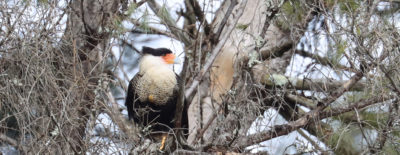
Rare Crested Caracara Visits Vermont - Again!
March 06, 2020On March 23, 2018 Mark Bessette surprised the Vermont iNaturalist community. Mark had snapped some photographs of an unusual-looking bird that he dubbed, “Elvis, the juvenile bald eagle.” The bird appeared to have a black wig that reminded Mark of the “King of Rock and Roll,” Elvis Presley. The iNaturalist community was quick to weigh in on the real identity of this bird. To seasoned birders, it easily stood out as a misplaced Crested Caracara. Read more about these two records on the VCE Blog » »

Asian Tiger Mosquito Found in Vermont
October 04, 2019State Agriculture and Health officials announced that the Asian Tiger mosquito (Aedes albopictus) has been identified for the first time in Vermont. This normally tropical/subtropical species is a known disease vector for Zika, chikungunya and dengue viruses, infecting humans in countries where these diseases are present. The mosquitoes found in Vermont do not currently carry these viruses. Read more on the VCE Blog »
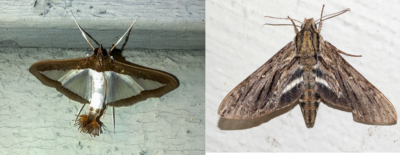
iNaturalists Discover More New Moths for Vermont
October 03, 2019The Vermont Atlas of Life, with the aid of many volunteers across Vermont, has been mapping moth distribution and phenology one photo-observation at a time. Since 2013, over 1,475 biologists and naturalists have contributed more than 51,000 moth photo-observations to the Vermont Atlas of Life on iNaturalist. Together, we've discovered over 100 new species for Vermont, and just recently, iNaturalists have done it again when two species new to Vermont were discovered and one species that was only known from a historical record was rediscovered. Read the VCE Blog post to learn more »
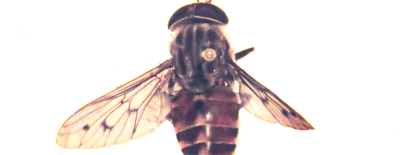
Fly Species New for Vermont Discovered by iNaturalist
October 01, 2019You don't have to go far to help the Vermont Atlas of Life discover species new to Vermont. You just have to be observant. On August 12th Roy Pilcher, citizen scientist extraordinaire and recipient of the Julie Nicholson Citizen Science Award in 2009, found one in his car! Roy was visiting the Helen W. Buckner Memorial Natural Area when he noticed that a large fly had flown through his open car window. Luckly, Roy is friends with Dr. Jeff Freeman, Professor Emeritus at Castleton University. Jeff has devoted much of his research into horse and deer flies and his extensive collections are housed at the University of Vermont Natural History Museum, Rutgers University, Natural History Museum in Philadelphia and other museums. Curious as to its identity, Roy captured the fly and delivered it to Jeff for an identification. The fly was Tabanus limbatinevris, a new species for Vermont! Lacking a common name, Tabanus limbatinevris was first described in 1847, but remained unrecognized until 1983 because it was confused with other similar horse flies. Its range was thought to be from Michigan and Ontario east to New Hampshire, and south to Georgia and Texas, but it had never been found in Vermont before Roy's fortunate discovery. Roy, a dedicated user of the Vermont Atlas of Life on iNaturalist added his observation and Jeff's identification to the project. The specimen will join others in the UVM Natural History Museum collection. There are now 14 species of horseflies known from Vermont. View the record on iNaturalist »
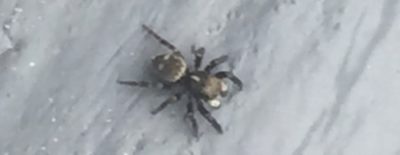
Introduced Jumping Spider Spotted in Vermont for First Time
September 17, 2019On June 10th Jasper Barnes, a wildlife biology student at the University of Vermont, snapped a photo of a tiny jumping spider near campus and shared it to the Vermont Atlas of Life on iNaturalist. He knew it was a jumping spider, but he wasn’t quite sure what species it was. It wasn’t long before a few experts saw his record and identified it as a Black-palped Jumping Spider (Pseudeuophrys erratica), an introduced species native to Europe and Asia. This is the first record for Vermont and the northernmost in the United States. Learn more on the VCE Blog »
Bee Survey Says... Numerous Species Found For First Time In Vermont This Summer
August 08, 2019This summer, the Vermont Center for Ecostudies has spearheaded the Vermont Wild Bee Survey in Chittenden County. According to project coordinator Spencer Hardy, more than 320 species have been documented thus far — and nearly a dozen appear to be species of wild bees that were previously unknown to be in the state. Listen to the story at Vermont Public Radio »
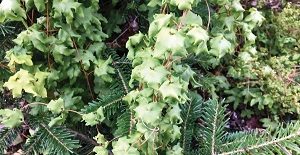
The Climbing Fern is Back in Vermont
August 06, 2019Last observed in Vermont in 1997, the climbing fern has been spotted again growing in the Northeast Kingdom, according to Vermont Fish & Wildlife’s botanist Bob Popp. Considered extirpated in the state, the climbing fern (Lygodium palmatum), was confirmed by botanist Art Gilman along a VELCO-owned powerline. Powerlines in Vermont can be hotspots for rare, threatened, and endangered plants, and VELCO is working with botanists to conserve the fern. Climbing fern typically grows a few feet tall in open boggy areas and is the only species of fern found in the Northeast that is a vine. Though the species is considered apparently secure globally, climbing fern is uncommon in states where it occurs, from Florida to New Hampshire, with only 48 known populations in New England. It is rare in northern New England and while this patch may have been there all along, it is possible that it is moving north in response to climate change. The climbing fern was one of several historically documented species that were rediscovered in Vermont this year. “We have been finding larger numbers of long-missing plant species in the last few years,” said Popp. “This is largely due to the work of an increased number of volunteers and professional botanists who are allowing us to search more areas of Vermont than in the past.”
European Hornet Identified For The First Time In Vermont
August 01, 2018The first Vermont specimen of the large European hornet was found in the southern part of the state and identified last month by the Department of Forests, Parks and Recreation. The department says it’s possible the species has been here for a while and only just now been identified. The yellow, black and brown insect is nearly twice the size of Vermont’s more familiar black-and-white baldfaced hornet. The European hornet first appeared in this country when it was inadvertently introduced in the mid-1800s and now ranges from the Northeast into the deep South and west to the Dakotas. Read more at Vermont Public Radio »
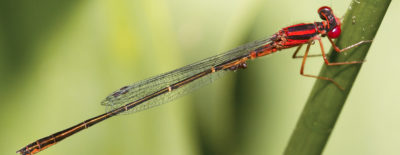
When a Bluet Isn’t Blue: Vermont’s “Newest” Damselfly
August 08, 2018We’ve got a new damselfly in Vermont! Nick Block found a Scarlet Bluet, our 45th known damselfly species (along with 101 known dragonfly species). The record is now enshrined with the Vermont Atlas of Life on iNaturalist. Read more on the VCE Blog »
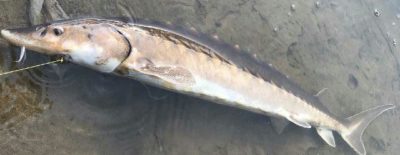
Endangered Fish Found in Vernon
November 01, 2017An endangered fish was hooked recently in the Connecticut River near Vernon. National Marine Fisheries Services Endangered Species Coordinator Julie Crocker says it was the first time a shortnose sturgeon was caught upstream from the Turners Falls Dam in Massachusetts. Crocker says there are shortnose sturgeon farther south in the river, and at this point scientists do not know how the fish got into Vermont. Learn more at VPR »
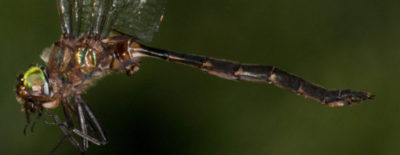
An Emerald Found in Victory
September 20, 2017Mike Blust and Josh Lincoln had a plan hatched by a fellow naturalist. Hike deep into the forest to a bog in northeast Vermont and find a rare emerald dragonfly that had never been seen in Vermont. Read about their trials and tribulations that led to elation at discovering this beautiful insect for the Vermont Damselfly and Dragonfly Atlas. Read the story on the VCE Blog »
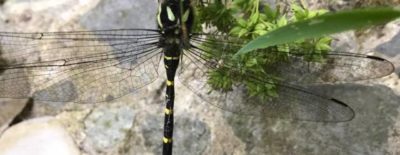
Tiger Found in Vermont
August 02, 2017Congratulations, Vermont. You’ve got a new dragonfly — Tiger Spiketail (Cordulegaster erronea). Dale Ferland, an angler who likes to poke around rivers, snapped that photo above on Monday from the Black River in Springfield. Read more »
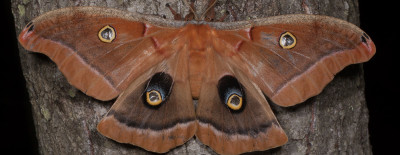
Nearly 400 New Moth Species Found in Vermont Since 1995
June 01, 2017The checklist of Vermont moths is being updated by the Vermont Atlas of Life. Thanks to the tireless efforts of both professional and amateur Lepidopterists, since the 1995 landmark publication Moths and Butterflies of Vermont: A Faunal Checklist, nearly 400 new moth species have been found in Vermont. Preliminary results show us that there are now over 2,200 species of moths known from Vermont. And, there are likely many more awaiting our discovery. Read more on the VCE Blog »
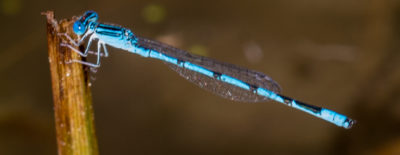
New Damselfly Discovered in Vermont
October 22, 2016It was a routine warm September day in the field for naturalist Joshua Lincoln. Wandering along the Waterbury Reservoir shoreline, his net was swiping at mostly Darners – recording Lance-tipped, Lake, and Shadow darners with his camera before releasing them. He stalked a pair of Orange Bluet damselflies to photograph. Thirty minutes later, he captured several closeup images of a blue damselfly perched on vegetation, a group that is notoriously hard to identify. Read the story on the VCE blog »
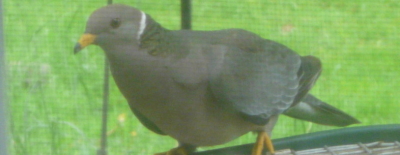
Two New Species of Birds for Vermont
January 04, 2016The Vermont Bird Records Committee (VBRC) held its 35th annual meeting in November. The VBRC reviewed 39 detailed reports of rare, out-of-season, and rare nesting species submitted by birdwatchers. Two new species of birds were discovered in Vermont as well as many other notable records. Read more on the VCE Blog »
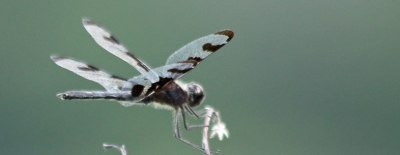
A New Dragonfly and a New Damselfly Added to Vermont Faunal List
October 01, 2014The summer of 2014 was a season of discovery for Vermont Odonata. Laura Gaudette posted a photograph of a Banded Pennant (Celithemis fasciata) on iNaturalist Vermont. Mike Blust was reviewing records on the site and immediately posted a note saying, “Congratulations Laura!!!!! You just got yourself a state record! Another southern species moving north.” Just 9 days later Laura joined Mike in an expedition to the under-surveyed Orange County, Vermont. They discovered a new damselfly for Vermont on the Ompompanoosuc River in Thetford, a River Bluet (Enallagma anna), and posted it to iNaturalist Vermont. It was quickly verified by another expert thanks to Mike’s close-up images of the important parts. Without Mike’s expertise, this damselfly may have gone completely unnoticed. Read more on the VCE blog »
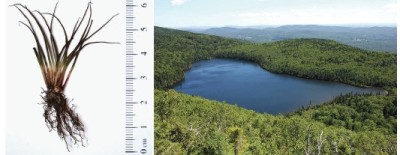
New to Science: Quillwort Discovered in Vermont
February 03, 2014Green Mountain Quillwort (Isoetes viridimontana) was discovered in 2010 by Michael Rosenthal, an amateur botanist from Vermont and recently described as a new species.As reported in American Fern Journal, the Green Mountain quillwort is special for a number of reasons. Perhaps most interesting to local botanists is the fact it is currently known from only one location in the world, which makes it a high priority for conservation efforts. Surveys to locate additional populations will be important, but the aquatic habit and difficulty of identifying quillworts (which are primarily identified by the size and ornamentation of minute spores that require at least 40× magnification for viewing) will hinder field surveys. The Green Mountain quillwort is also special in that it is a diploid species: it has only two sets of chromosomes, while many northeastern quillworts have multiple sets of chromosomes. This suggests that the Green Mountain quillwort may have had a role in forming other species through hybridization, providing insights into the evolution of this group of plants. Read the journal paper »

New to Science: Three Springtails Discovered in Vermont
June 01, 2013In 2011 Felipe N. Soto-Adames and colleagues described three new species of springtails, all discovered in Vermont. Subisotoma joycei and Scutisotoma champi were collected in sandy beaches along Lake Champlain, and Ballistura rossi was found only in a constructed wetland built and managed by the University of Vermont. Subsequently, S. joycei was moved to a new genus, Bellisotoma (Soto-Adames, Giordano & Christiansen 2013). The new genus was dedicated to Ross and Joyce Bell, in celebration of their contributions to the study of the entomological fauna of Vermont. Read the journal paper »
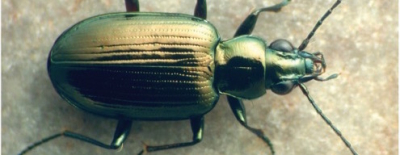
New to Science: Ground Beetle Discovered in Bridgewater, Vermont
October 01, 2008David Maddison looked at the morphological, cytogenetic, and molecular variation within the Bembidion chalceum and B. honestum group and found that the concepts of these two consisted of a complex of at least seven species. The new Bembidion chalceum subgroup consists of B. chalceum, B. rothfelsi, B. bellorum, B. antiquum, and B. louisiella. The B. honestum subgroup consists of B. honestum, B. arenobilis, B. integrum and B. rufotinctum. B. rothfelsi type locality is along the Ottauquechee River in Bridgewater, Vermont. Read the journal paper »
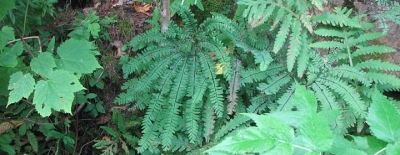
New to Science: Maidenhair Fern Described from Vermont
July 04, 1991This new species of fern was formerly described by Cathy Paris in 1991. It is a very rare fern only known from 7 places in Vermont and Quebec. Learn more about this species »






